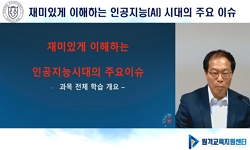The world is changing everyday. The phrase the 4th Industrial Revolution is no longer unfamiliar. The same is true of the term artificial intelligence, used in several fields of our society. In fact, the world has always been changing; however, it see...
http://chineseinput.net/에서 pinyin(병음)방식으로 중국어를 변환할 수 있습니다.
변환된 중국어를 복사하여 사용하시면 됩니다.
- 中文 을 입력하시려면 zhongwen을 입력하시고 space를누르시면됩니다.
- 北京 을 입력하시려면 beijing을 입력하시고 space를 누르시면 됩니다.
https://www.riss.kr/link?id=A108011134
- 저자
- 발행기관
- 학술지명
- 권호사항
-
발행연도
2022
-
작성언어
Korean
-
주제어
시조 ; 인공지능 ; 인공지능인문학 ; 디지털 분석 ; 코로나-19 ; 워드임베딩 ; Sijo ; Artificial intelligence(AI) ; Artificial intelligence humanities ; Digital analysis ; COVID-19 ; Word2Vec ; embedding
-
KDC
811
-
등재정보
KCI등재
-
자료형태
학술저널
- 발행기관 URL
-
수록면
59-84(26쪽)
-
KCI 피인용횟수
0
- DOI식별코드
- 제공처
- 소장기관
-
0
상세조회 -
0
다운로드
부가정보
다국어 초록 (Multilingual Abstract)
For the study, first, college students were required to create a predecessor by focusing on COVID-19. Therefore, 105 analysis targets could be secured, although certainly, 105 works are insufficient for analysis. Considering that it takes a substantial amount of time for individual researchers to analyze all works one at a time, this paper is meaningful in that it explores a methodology to analyze many works in a short duration. The above works were analyzed using digital techniques. First, morpheme was analyzed using KoNLPys Mecab. Next, word embedding was performed using the gensim word2vec function, to derive words with high cosine similarity to Corona, and the results were analyzed. In addition, considering the fact that the meaning of addition and subtraction between word vectors can be calculated, the perceptions of college students were examined with respect to the end of COVID-19 through the calculation of a meaning in the form of I-Corona. Through word2vec, 100 words that students frequently used in the process of creating the sijo were extracted, visualized, and expressed in two-dimensional space.
The analysis conducted on the above works provided results similar to those conducted by myself on several of the works, although I admit that the target works are insufficient for generalization. Therefore, for this work to be recognized for its significance as a new methodology in research, a sufficient number of target works should be secured to analyze and develop the capabilities necessary to comprehensively understand the digital analysis results.
The world is changing everyday. The phrase the 4th Industrial Revolution is no longer unfamiliar. The same is true of the term artificial intelligence, used in several fields of our society. In fact, the world has always been changing; however, it seems that the changing world has never given serious consideration to classical researchers. These days, the strong wind of change does not distinguish between countries, generations, or regions. The same holds for literary research, and classical science is no exception. This does not necessarily mean that everything has to change. In the case of classical science, traditional research still exists and needs to continue that way, as the classics were not created in a day. Nonetheless, it is necessary to determine a new methodology for classical studies. This work attempts to address this need by analyzing literary works using digital technology, including artificial intelligence, as a tool.
For the study, first, college students were required to create a predecessor by focusing on COVID-19. Therefore, 105 analysis targets could be secured, although certainly, 105 works are insufficient for analysis. Considering that it takes a substantial amount of time for individual researchers to analyze all works one at a time, this paper is meaningful in that it explores a methodology to analyze many works in a short duration. The above works were analyzed using digital techniques. First, morpheme was analyzed using KoNLPys Mecab. Next, word embedding was performed using the gensim word2vec function, to derive words with high cosine similarity to Corona, and the results were analyzed. In addition, considering the fact that the meaning of addition and subtraction between word vectors can be calculated, the perceptions of college students were examined with respect to the end of COVID-19 through the calculation of a meaning in the form of I-Corona. Through word2vec, 100 words that students frequently used in the process of creating the sijo were extracted, visualized, and expressed in two-dimensional space.
The analysis conducted on the above works provided results similar to those conducted by myself on several of the works, although I admit that the target works are insufficient for generalization. Therefore, for this work to be recognized for its significance as a new methodology in research, a sufficient number of target works should be secured to analyze and develop the capabilities necessary to comprehensively understand the digital analysis results.
참고문헌 (Reference)
1 이기창, "한국어 임베딩" 에이콘 2019
2 김태경, "코로나19 관련 현대시조 연구" 우리문학회 (70) : 331-365, 2021
3 권기성, "컴퓨터를 이용한 고전문학의 방법론적 전환과 전망—필기, 야담의 연구 사례를 중심으로—" 인문콘텐츠연구소 1 : 9-29, 2018
4 최운호 ; 김동건, "컴퓨터를 이용한 고전문학 디지털콘텐츠의 유사도에 따른 이본 계통 분류 연구" 한국정보기술학회 12 (12): 101-110, 2014
5 최운호 ; 김동건, "컴퓨터 문헌 분석 기법을 활용한 <토끼전> 이본 연구" 우리문학회 (58) : 123-154, 2018
6 김성문, "인공지능 시대와 고전문학" 한국문화융합학회 40 (40): 129-154, 2018
7 이명현 ; 유형동, "인공지능 시대에 고전문학을 활용한 창의적 표현 교육 방안 연구- 고전서사 리텔링을 중심으로 -" 한국문화융합학회 41 (41): 655-686, 2019
8 권기성 ; 김동건, "야담집 색인 데이터베이스의 구축방안 모색-『기문총화(記聞叢話)』를 중심으로-" 고전문학한문학연구학회 22 : 93-126, 2017
9 강우규 ; 김바로, "소현성록 연작의 문체론적 고찰 -컴퓨터를 활용한 계층분석을 바탕으로" 인문과학연구소 (59) : 29-46, 2018
1 이기창, "한국어 임베딩" 에이콘 2019
2 김태경, "코로나19 관련 현대시조 연구" 우리문학회 (70) : 331-365, 2021
3 권기성, "컴퓨터를 이용한 고전문학의 방법론적 전환과 전망—필기, 야담의 연구 사례를 중심으로—" 인문콘텐츠연구소 1 : 9-29, 2018
4 최운호 ; 김동건, "컴퓨터를 이용한 고전문학 디지털콘텐츠의 유사도에 따른 이본 계통 분류 연구" 한국정보기술학회 12 (12): 101-110, 2014
5 최운호 ; 김동건, "컴퓨터 문헌 분석 기법을 활용한 <토끼전> 이본 연구" 우리문학회 (58) : 123-154, 2018
6 김성문, "인공지능 시대와 고전문학" 한국문화융합학회 40 (40): 129-154, 2018
7 이명현 ; 유형동, "인공지능 시대에 고전문학을 활용한 창의적 표현 교육 방안 연구- 고전서사 리텔링을 중심으로 -" 한국문화융합학회 41 (41): 655-686, 2019
8 권기성 ; 김동건, "야담집 색인 데이터베이스의 구축방안 모색-『기문총화(記聞叢話)』를 중심으로-" 고전문학한문학연구학회 22 : 93-126, 2017
9 강우규 ; 김바로, "소현성록 연작의 문체론적 고찰 -컴퓨터를 활용한 계층분석을 바탕으로" 인문과학연구소 (59) : 29-46, 2018
10 김성근, "비트겐슈타인의 언어관" 인천가톨릭대학교 대학원 2007
11 박경우, "머신러닝을 활용한 고시조 연구 방법론 탐색 -운율 패턴 추출 방안을 중심으로-" 열상고전연구회 (74) : 37-68, 2021
12 김성문 ; 김바로, "딥러닝을 활용한 시조의 유형 고찰 - 영남가단과 호남가단의 시조를 중심으로" 한국문화융합학회 43 (43): 185-204, 2021
13 권혁래, "디지털 인문학과 고전문학의 만남" 열상고전연구회 (50) : 9-12, 2016
14 김성문 ; 김바로, "디지털 분석 기법을 활용한 시조문학 연구 - 인공지능(AI) 제재 창작 시조를 중심으로 -" 한국문화융합학회 41 (41): 747-772, 2019
15 김성문 ; 김바로, "디지털 분석 기법을 활용한 시조 연구 방법 탐색-『한국시조대사전』 수록 단형시조를 중심으로-" 문화콘텐츠기술연구원 (34) : 209-236, 2020
16 장정수, "계몽기․근대시조 DB의 개선 및 콘텐츠화 방안 연구" 한국시조학회 (44) : 105-138, 2016
17 강우규 ; 김바로, "계량적 문체 분석을 통한 <소현성록> 연작의 변이양상 고찰 - 이대15권본과 규장각21권본을 중심으로 -" 국제어문학회 (80) : 115-135, 2019
동일학술지(권/호) 다른 논문
-
- 한국시조학회
- 권성훈(Kwon, Sung-hun)
- 2022
- KCI등재
-
TV 드라마 〈황진이〉의 시조 재현 양상과 스토리텔링 기법의 의미 고찰
- 한국시조학회
- 이채영(Lee, Chae-young)
- 2022
- KCI등재
-
- 한국시조학회
- 김지은(Kim, Ji-eun)
- 2022
- KCI등재
-
- 한국시조학회
- 배은희(Bae, Eun-hee)
- 2022
- KCI등재
분석정보
인용정보 인용지수 설명보기
학술지 이력
| 연월일 | 이력구분 | 이력상세 | 등재구분 |
|---|---|---|---|
| 2026 | 평가예정 | 재인증평가 신청대상 (재인증) | |
| 2020-01-01 | 평가 | 등재학술지 유지 (재인증) |  |
| 2017-01-01 | 평가 | 등재학술지 유지 (계속평가) |  |
| 2013-01-01 | 평가 | 등재학술지 유지 (등재유지) |  |
| 2010-01-01 | 평가 | 등재학술지 유지 (등재유지) |  |
| 2008-01-01 | 평가 | 등재학술지 유지 (등재유지) |  |
| 2005-01-01 | 평가 | 등재학술지 선정 (등재후보2차) |  |
| 2004-01-01 | 평가 | 등재후보 1차 PASS (등재후보1차) |  |
| 2003-01-01 | 평가 | 등재후보학술지 선정 (신규평가) |  |
학술지 인용정보
| 기준연도 | WOS-KCI 통합IF(2년) | KCIF(2년) | KCIF(3년) |
|---|---|---|---|
| 2016 | 0.41 | 0.41 | 0.49 |
| KCIF(4년) | KCIF(5년) | 중심성지수(3년) | 즉시성지수 |
| 0.55 | 0.55 | 1.045 | 0.13 |




 KCI
KCI DBpia
DBpia







